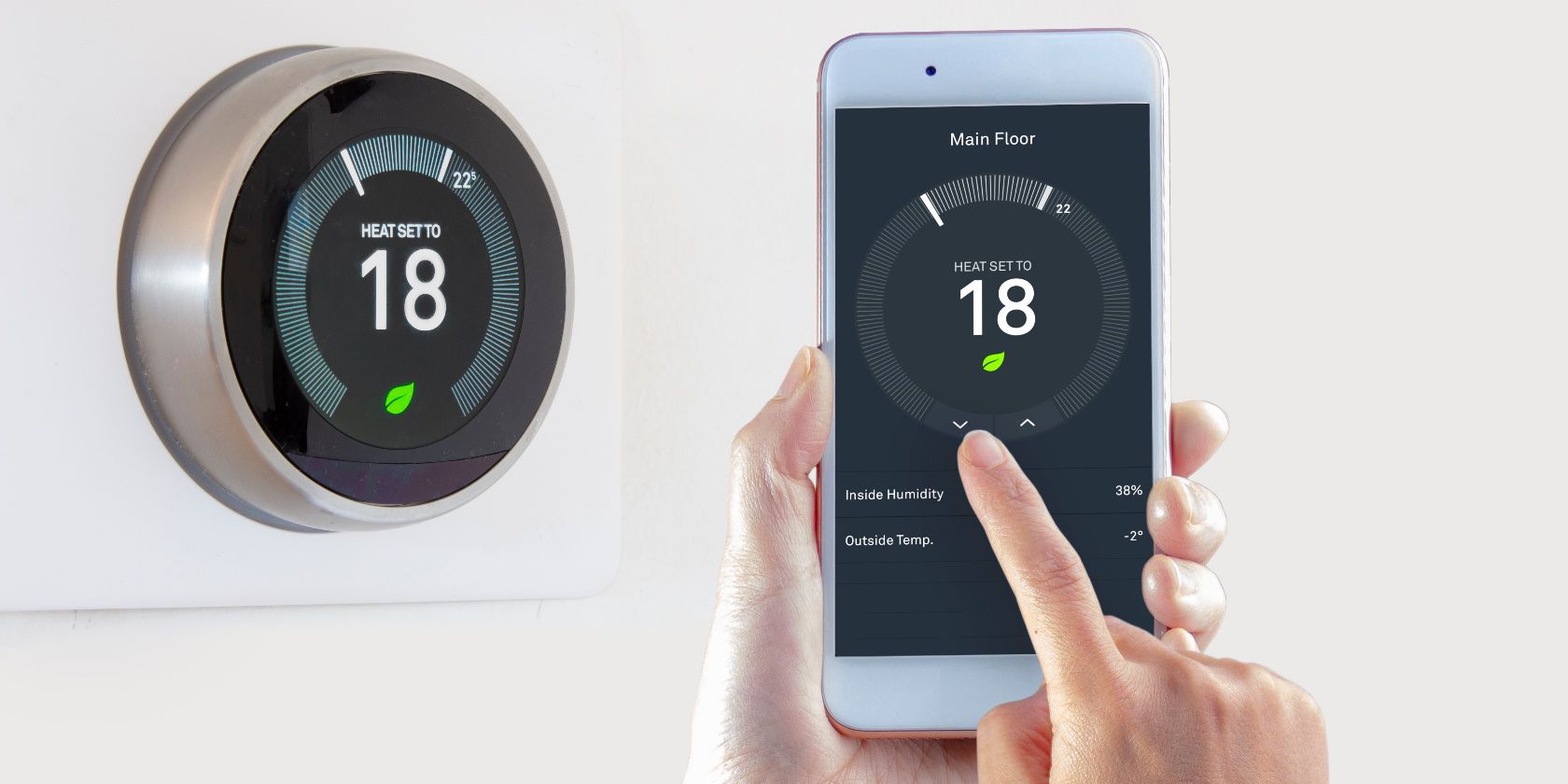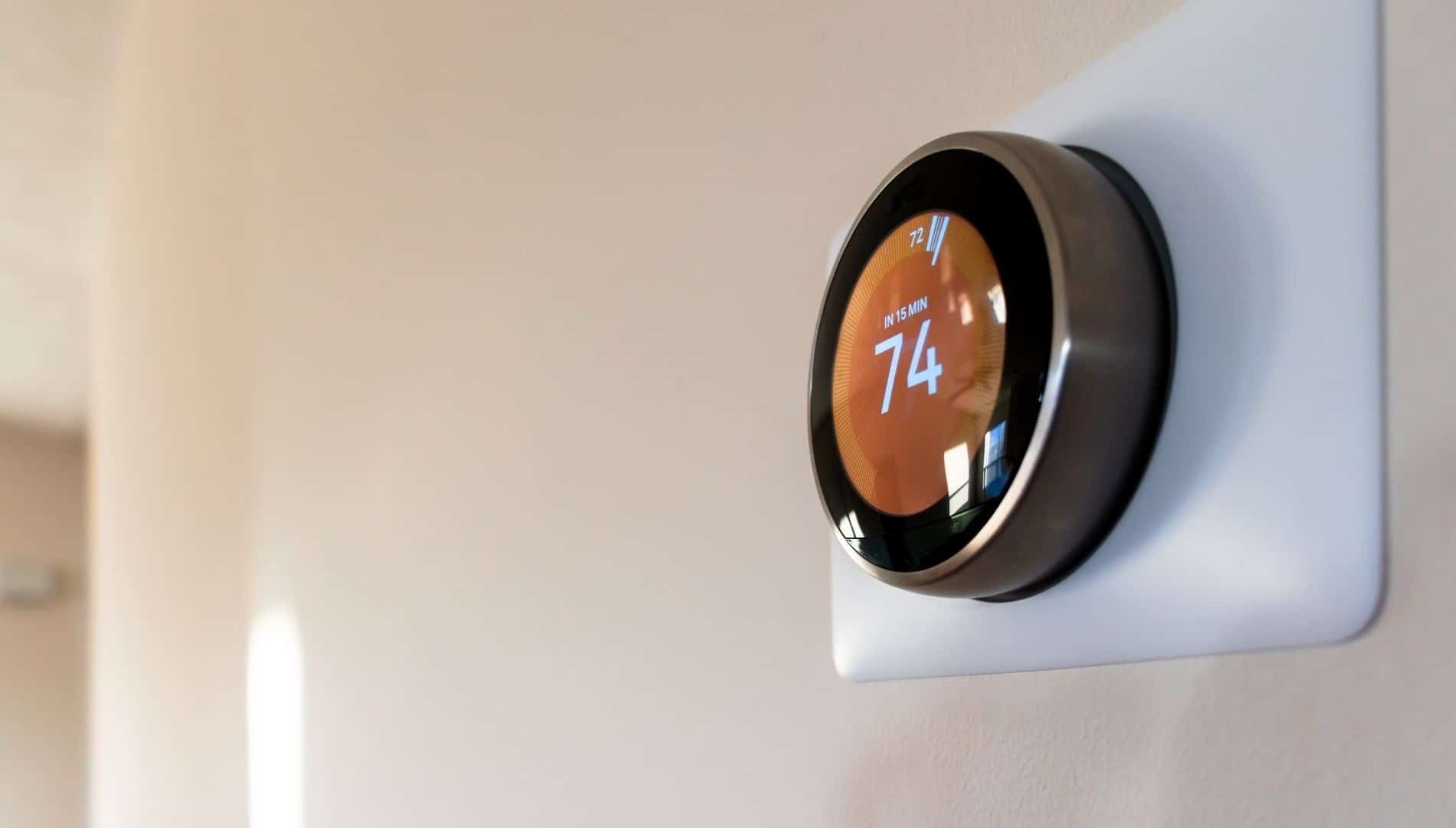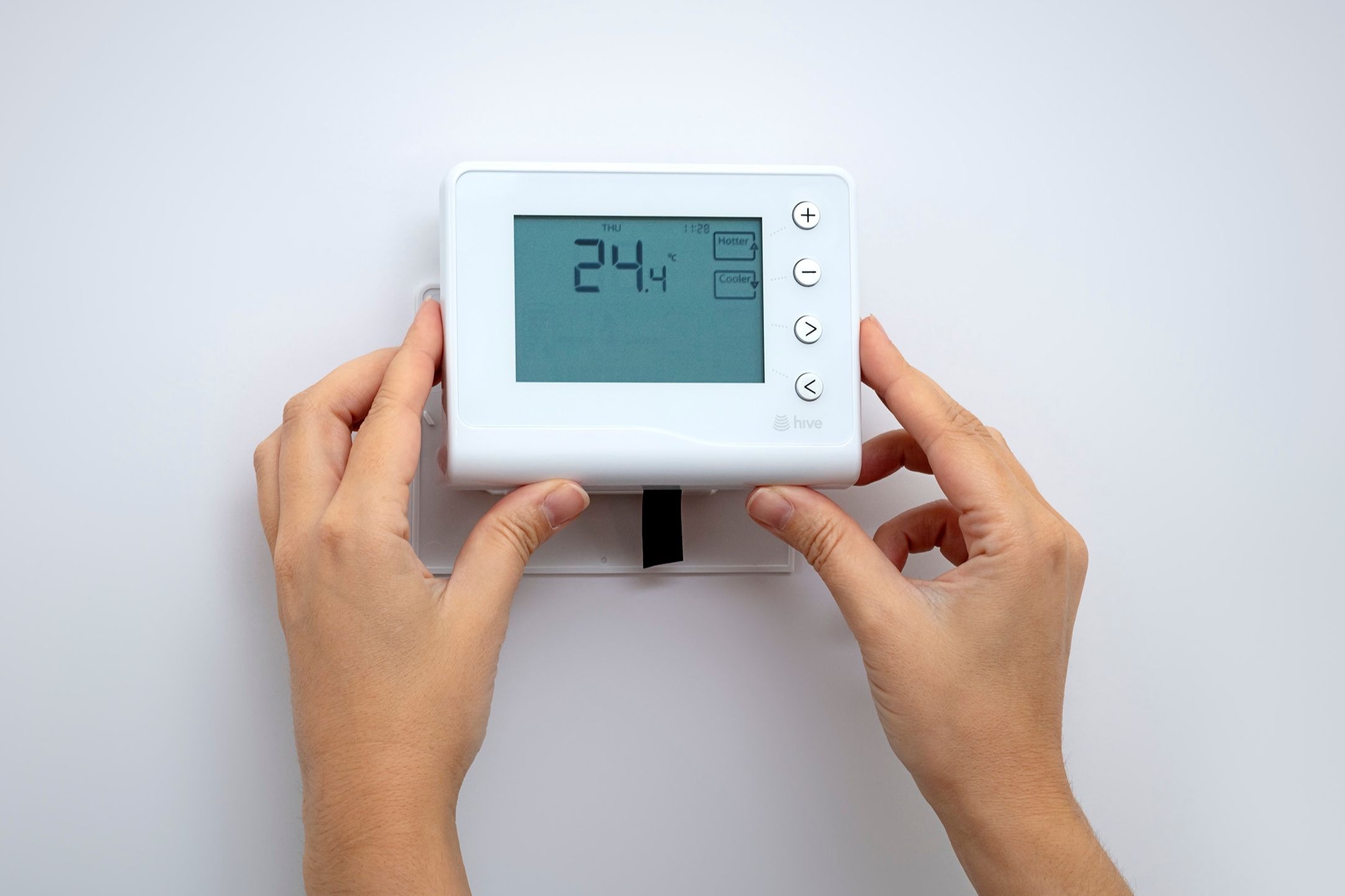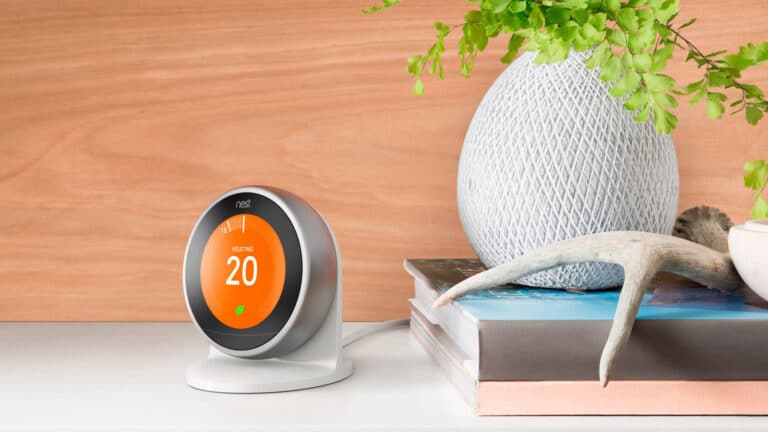Introduction
How To Know If Smart Thermostat Is Compatible: In the ever-evolving landscape of home automation, smart thermostats have emerged as a convenient and energy-efficient solution for controlling indoor climates. These intelligent devices not only offer remote control and scheduling capabilities but also promise to optimize energy consumption, leading to potential cost savings. However, compatibility is a crucial consideration before making the switch to a smart thermostat.
Determining whether your home’s heating, ventilation, and air conditioning (HVAC) system is compatible with a smart thermostat is a fundamental step in the installation process. Installing a smart thermostat that isn’t compatible with your HVAC system can lead to frustration, inefficiencies, and a waste of resources.
The goal of this detailed tutorial is to remove the mystery from figuring out whether or not a smart thermostat will work with your setup. We will delve into the key factors that influence compatibility, including the type of HVAC system you have. The wiring infrastructure in your home, and the specific requirements of different smart thermostat models. By learning about these considerations, you can determine whether or not a smart thermostat will work with your current system.
Whether you’re a tech-savvy homeowner looking to make your living space more intelligent or someone who simply wants to harness the benefits of a connected home, this guide will provide you with the insights needed to ascertain smart thermostat compatibility accurately. Stay ahead in the realm of home automation by ensuring a seamless integration of this innovative technology into your household.
Can I replace my old thermostat with a smart thermostat?
If your house has baseboard heaters and there’s a thermostat in every room, you have line-voltage thermostats. These run on 120 or 240 volts and are hardwired into the building’s electrical infrastructure. You can still replace them with digital thermostats, even smart ones like the Mysa Smart Thermostat.
The good news is that modern smart thermostats may often be used in place of older, more traditional devices. However, compatibility is the pivotal factor. When shopping for a smart thermostat, it’s important to think about your home’s wiring setup. The sort of HVAC system you have, and the thermostat’s unique requirements. Some systems might require a common wire (C-wire) for power, which might not be present in older installations.
Before embarking on the replacement journey, assess your system’s compatibility by consulting the manufacturer’s guidelines, checking your HVAC wiring, and perhaps seeking professional assistance. Smart thermostats offer advantages like remote control, energy savings, and personalized scheduling, making the endeavor worthwhile for many.
Ultimately, the decision to replace your old thermostat with a smart one hinges on the compatibility assessment. If your system aligns with the requirements, you’ll be well on your way to enjoying the convenience and efficiency that smart thermostats bring to modern home environments.

How do you know which smart thermostat to buy?
Things to know
- Compatibility. Before you buy, make sure the smart thermostat will work with your HVAC system
- Remote sensors. Choose a thermostat that works with miniature remote temperature sensors to even out heating and cooling around your home.
- Control options
- Geolocation.
Navigating the myriad options in the world of smart thermostats can be both exciting and overwhelming. Choosing the right one involves careful consideration of various factors to ensure that the device aligns with your home’s needs and your personal preferences.
First, evaluate compatibility with your HVAC system. Different systems have varying requirements, so ensure the smart thermostat you’re eyeing is compatible. Next, consider the features that matter most to you. Do you prioritize remote control, energy reports, learning capabilities, or integration with other smart devices? Prioritize based on your lifestyle.
Budget is another vital aspect. Smart thermostats come at various price points, so determine what you’re willing to invest. Researching brands and reading reviews can help you gauge reliability and customer satisfaction.
An often overlooked consideration is the ease of use and setup. Opt for a smart thermostat with an intuitive interface and straightforward installation process unless you’re comfortable with more technical setups.
If you’re concerned about energy efficiency, look for models with Energy Star certification or advanced scheduling features. Furthermore, if you have already invested in a smart home environment, connectivity with virtual assistants like Amazon Alexa or Google Assistant may be appealing.
The right smart thermostat depends on your HVAC system, desired features, budget, ease of use, and compatibility with your existing smart home setup. Thorough research and assessing your needs will guide you toward selecting the ideal smart thermostat to enhance your home’s comfort and efficiency.
Do smart thermostats work with all HVAC systems?
Conventional HVAC systems were never meant to communicate with the plethora of smart gadgets on the market today. It’s even possible that your specific HVAC system will only operate as designed with one specific style of thermostat or HVAC control system installed on the wall.
While smart thermostats offer innovative ways to control and optimize your home’s temperature, they may not be universally compatible with all HVAC (heating, ventilation, and air conditioning) systems. The compatibility of a smart thermostat largely depends on the type of HVAC system you have.
Smart thermostats typically work well with common HVAC systems like central heating and cooling systems, heat pumps, and some multi-stage systems. However, there are variations in wiring, voltage requirements, and functionalities among different HVAC setups. Some older systems might lack the necessary wiring infrastructure to support certain smart thermostat features.
Before purchasing a smart thermostat, it’s crucial to verify its compatibility with your specific HVAC system. Manufacturers often provide compatibility checkers on their websites or in their product documentation. Additionally, seeking advice from HVAC professionals can provide valuable insights.
While smart thermostats bring numerous benefits, including remote control, energy savings, and scheduling flexibility, it’s essential to ensure that the chosen device aligns with your HVAC infrastructure. Careful consideration and compatibility assessment will lead to a successful integration, allowing you to fully leverage the advantages of a smart thermostat in your home.
Can a smart thermostat work with any boiler?
Whether or not your wireless thermostat can be linked to your boiler depends on the model you have. In most cases, they are compatible with most modern boilers, including combi, system, and heat-only boilers.
The compatibility between a smart thermostat and a boiler depends on several factors, and not all boilers may be suitable for integration with smart thermostat technology. In theory, smart thermostats should improve heating system management, energy efficiency, and user ease.
Most smart thermostats are compatible with a range of boiler types, including conventional gas or oil boilers, as well as some modern combi (combination) boilers. However, compatibility can vary based on the wiring and communication protocols used by the boiler and the smart thermostat.
Boilers that use standard wiring and have a clearly defined communication protocol are more likely to be compatible with a broader range of smart thermostats. Newer boilers often come with features that enable them to work seamlessly with smart thermostats, allowing for remote control, scheduling, and even learning capabilities.
Before purchasing a smart thermostat, it’s advisable to consult the manufacturer’s compatibility guidelines and possibly seek advice from HVAC professionals. They can help determine whether the smart thermostat you’re considering is a suitable match for your specific boiler type and setup. This ensures a successful integration that maximizes the benefits of both technologies.
Can you use a smart thermostat in any home?
You should be fine using a conventional thermostat or timer with your setup. If you have a communal or district heating system, most smart thermostats are still compatible as long as you already use an individual thermostat. However, most won’t work with storage heaters and heat pumps.
Smart thermostats offer a convenient and energy-efficient way to control the heating and cooling systems in homes. While they can be a valuable addition to many households, their compatibility depends on the existing HVAC (Heating, Ventilation, and Air Conditioning) system and the home’s wiring.
Not all homes are built the same way, and the compatibility of a smart thermostat varies. Most modern smart thermostats are designed to work with a wide range of HVAC systems, including central heating and cooling, heat pumps, and even some older systems. However, some systems might lack the necessary wiring or technology to support smart thermostat functionality.
Before purchasing a smart thermostat. It’s essential to check the manufacturer’s compatibility guidelines and perhaps consult with a professional HVAC technician. Some homes might need additional wiring or adapters to make a smart thermostat work correctly.
Many homes can use a smart thermostat, but not all can because of incompatibilities with the HVAC and wiring. It’s crucial to do proper research, check compatibility, and possibly seek professional assistance to ensure seamless integration of a smart thermostat into your home’s heating and cooling setup.

What is the difference between a thermostat and a smart thermostat?
A smart thermostat goes above and beyond a programmable thermostat and is more intuitive when it comes to heating and cooling your home. They learn from your behavior, following the temperature alterations you make, and begin making those changes on their own.
The fundamental distinction between a thermostat and a smart thermostat lies in their capabilities and features for regulating indoor temperature. A conventional thermostat functions as a basic control device that allows users to manually adjust the heating or cooling settings in their home. It operates on a preset schedule or user inputs, without the ability to adapt to changing conditions.
Conversely, a smart thermostat offers a more advanced and dynamic approach to temperature control. It combines traditional thermostat functions with intelligent technology, enabling features like remote access through smartphone apps and the ability to learn from user behavior. Smart thermostats can create personalized schedules, adjusting temperatures based on occupants’ routines and preferences. They often include sensors to detect occupancy and adjust settings accordingly, optimizing energy usage.
Moreover, smart thermostats can integrate with home automation systems, allowing seamless coordination with other smart devices like lights and locks. Some models use machine learning algorithms to anticipate temperature needs and make automatic adjustments to enhance energy efficiency.
How do I determine if my current HVAC system is compatible with a smart thermostat?
Most smart thermostat manufacturers provide compatibility check tools on their websites. You’ll usually need to provide information about your current HVAC system, such as the type of heating and cooling equipment you have, the wiring setup, and more.
To ascertain whether your existing HVAC system is compatible with a smart thermostat, follow these steps:
Check HVAC System Type: Identify the type of HVAC system you have, such as central heating and cooling, heat pump, or multi-stage system. Most programmable thermostats are compatible with a wide range of HVAC systems, but checking compatibility is still a must.
Review Wiring: Examine your current thermostat’s wiring. Smart thermostats typically require a “C” wire (common wire) to provide continuous power. If your current thermostat lacks this wire, some smart thermostats offer workarounds, while others might need professional installation.
Research Compatibility: Visit the manufacturer’s website of the smart thermostat you’re interested in. They usually provide compatibility checkers or lists of supported HVAC systems. Cross-reference this information with your HVAC system details.
Professional Consultation: If unsure, consult an HVAC professional. They may assess your system’s compatibility and advise you on any changes that may be necessary for a smooth implementation.
Smart Thermostat Features: Consider your desired features like remote control, learning capabilities, and integration with other devices. Ensure the smart thermostat you choose aligns with your preferences and lifestyle.
App Compatibility: Check if the smart thermostat’s mobile app is compatible with your smartphone’s operating system.
Determining compatibility involves understanding your HVAC system, its wiring, and the requirements of the smart thermostat. If you’re having trouble deciding whether or not to install a smart thermostat. It’s a good idea to get some expert advice or check the manufacturer’s website.
Are there different types of smart thermostats for different heating and cooling systems?
Yes, smart thermostats are compatible with a wide range of heating, ventilation, and air conditioning (HVAC) systems. This includes both single-stage and multi-stage HVAC systems, heat pumps, radiant heating and cooling, and more. Make sure to select a smart thermostat model that matches your specific HVAC setup.
There are different types of smart thermostats designed to cater to various heating and cooling systems commonly found in homes. The diversity in HVAC systems necessitates specific smart thermostat models to ensure compatibility and optimal performance.
Central Heating and Cooling Systems: These are the most common HVAC setups in homes. Smart thermostats designed for central systems work with forced air furnaces and air conditioning units. They often require a “C” wire for power and can efficiently control both heating and cooling.
Heat Pump Systems: Heat pumps are increasingly popular for their energy efficiency. Smart thermostats compatible with heat pumps have features to handle both heating and cooling modes unique to these systems.
Multi-Stage Systems: Some homes have multi-stage heating or cooling, where the HVAC system can operate at different levels of output for better efficiency. Smart thermostats for multi-stage systems accommodate these complexities.
Boiler Systems: Homes with radiant heat or steam boilers require specific smart thermostats that can control these systems effectively, often including features like zone control.
High Voltage Systems: Electric baseboard heaters and line-voltage systems have higher power demands. Specialized smart thermostats are built to handle these voltages safely.
When considering a smart thermostat, it’s crucial to select one that matches your HVAC system type. In order to help you make a decision that will result in optimal performance and smooth integration with your existing heating and cooling system. Several manufacturers publish compatibility information on their websites.

Conclusion
In the realm of modern home comfort and efficiency, the introduction of smart thermostats marks a significant advancement. However, as this technology continues to reshape our living spaces, the importance of ensuring compatibility cannot be overstated. The journey to a seamlessly integrated and energy-conscious home begins with a clear understanding of whether your HVAC system can effectively collaborate with a smart thermostat.
By now, you have gained valuable insights into the multifaceted world of smart thermostat compatibility. From comprehending the diverse HVAC systems and their specific requirements to unraveling the intricacies of wiring configurations.
As you embark on this home-enhancing endeavor, always consult manufacturer guidelines, seek professional advice if needed, and reference this guide to navigate the compatibility assessment process effectively. The result? A home environment that is not only comfortable and convenient but also attuned to the demands of the modern age.
Embrace the future of home automation by ensuring your smart thermostat harmonizes seamlessly with your HVAC system. Your journey toward an intelligently controlled, energy-efficient, and comfortable living space starts now.

